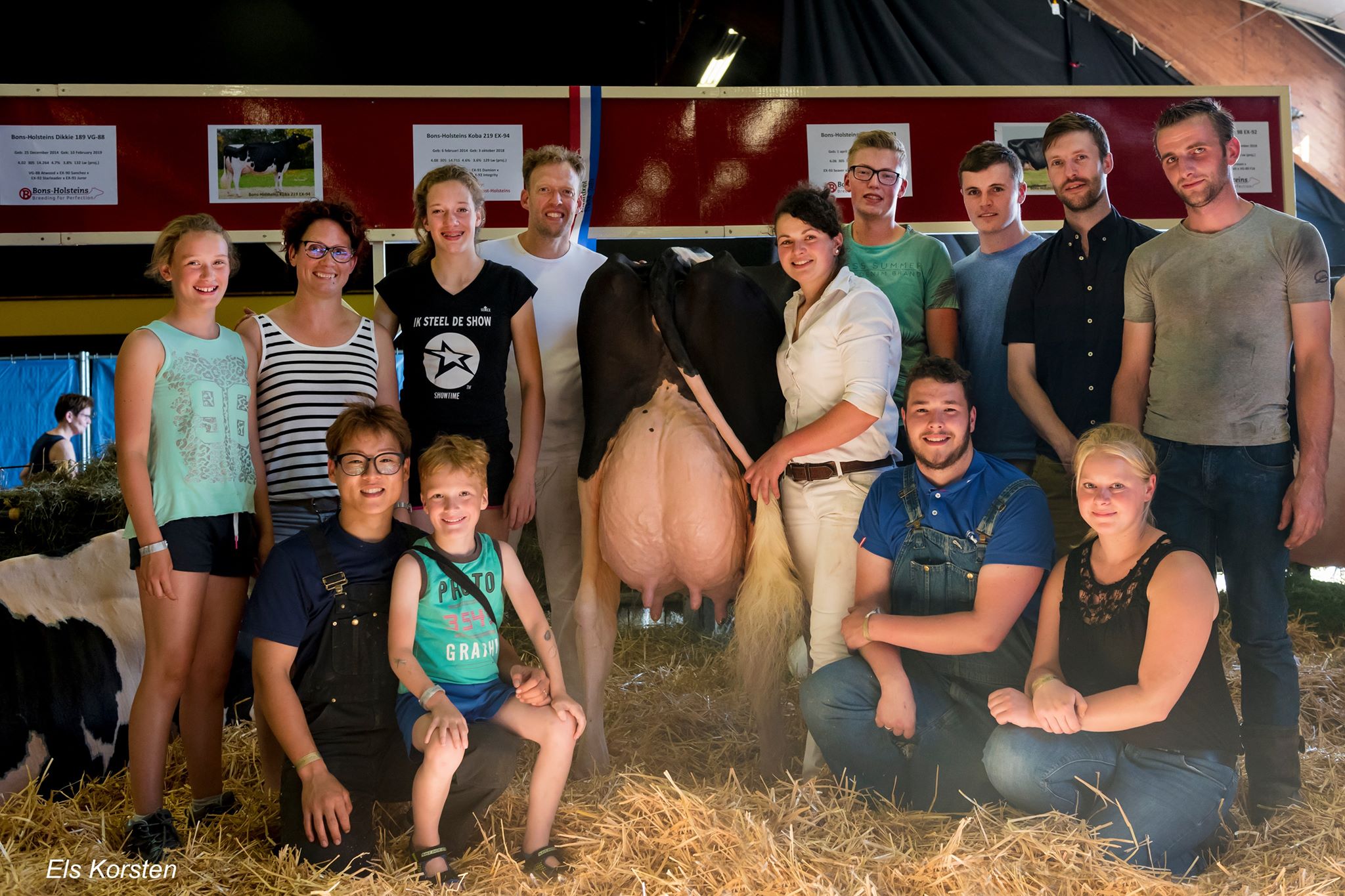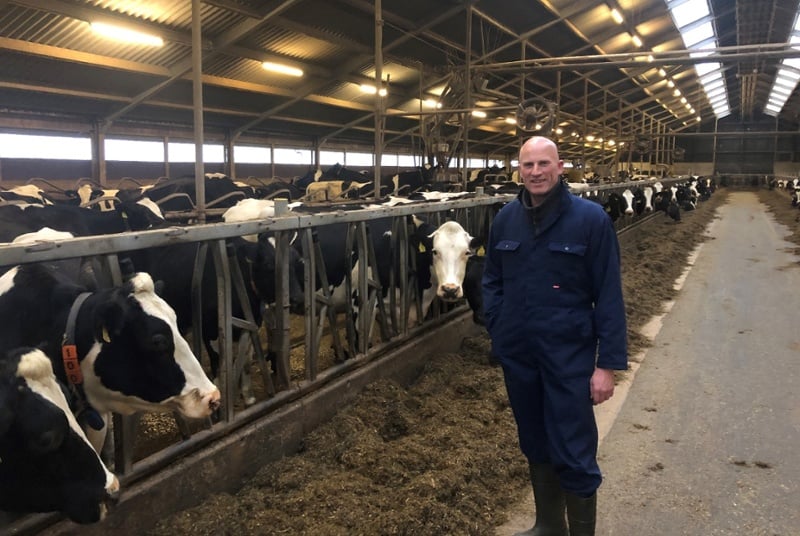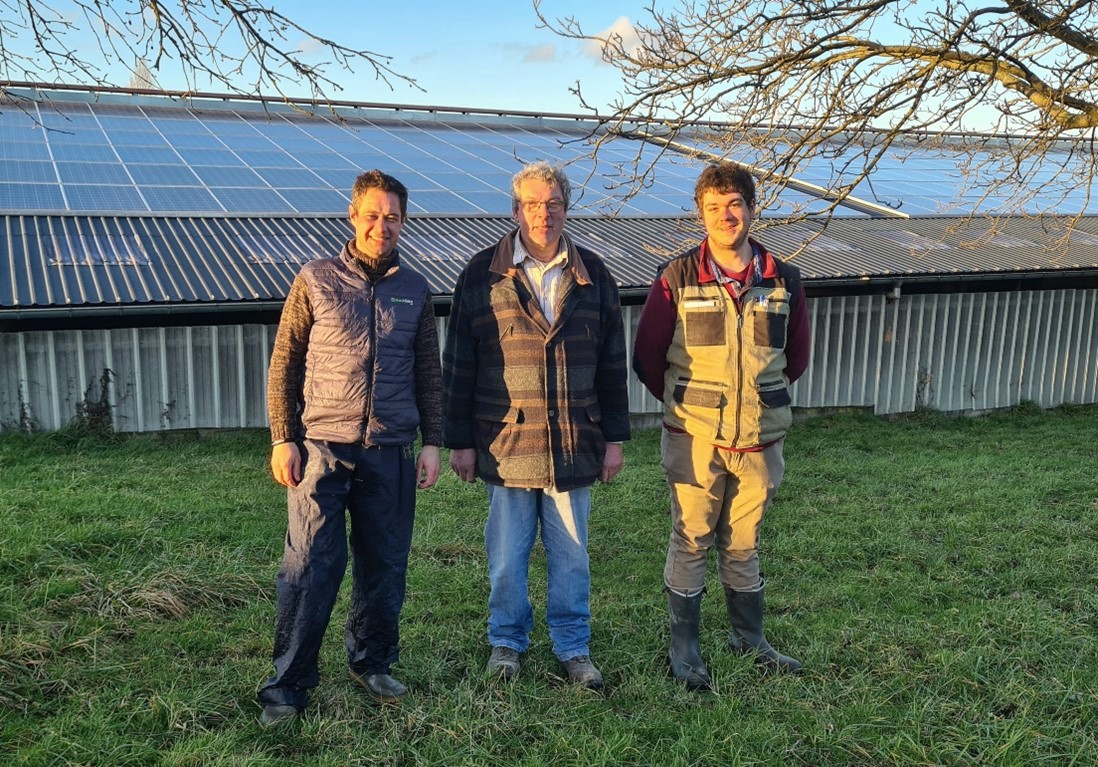The 60 red- and black-headed dairy cows belonging to Wilfried and Chiel De Blanger from Vrasene, has a real shine on their coat. For years, the farm managers have been emphasising animal health. Crossing with Brown Swiss genes was one way to take the cows' resistance to a higher level. For four years now, the dairy farmers have been working with mineral mixes with OmniGen in both dry-off and lactation to contribute to resistance on the feed side as well. ‘We see that there is less sick cows, and when they do get sick, they recover faster,’ he says.
Text: Annelies Debergh - Image: Annelies Debergh and Sander Van Beneden
A motley collection of red- and black and white dairy cows and young stock in the stables of Wilfried and Chiel De Blanger from Vrasene in East Flanders. Apart from traditional red- and black and white, a number of cows still show Brown Swiss traits, including a black or a brownish red colour and a typical white rim around the nose. These are descendants of the second and third generation, it appears. ‘To breed a stronger cow, we crossed some of the cows with Brown Swiss genes. In this way, we hoped to breed cows that last longer and are also sturdy.’ Chiel De Blanger explains why this breed was chosen, pointing among other things, the strong, sturdy feet. ‘We did see some progress in the longevity of the cows, but the loss of milk led us to choose Holstein genetics again anyway.’
The barn now has about a third black and two-thirds red and white cows. The preference is for red and white cows, although ultimately high milk production is the real goal in the barn. The dairy cows produce now average 10,600 kilograms of milk with 4.06 per cent fat and 3.38 per cent protein. ‘We have seen an increase in milk production in recent years and continue to work on the production figures. The work is never finished.’
Because the system fits well into the operations, Wilfried and Chiel always work already with a block calving period. ‘It works easily to divide all the work on the farm into blocks,’ says Wilfried De Blanger. Inseminations take place from 1 November and are completed by the end of February. Some take longer. The insemination itself and the emphasis on breeding is broad, strong cows that produce milk smoothly. produce milk. ‘We stick to our working method. In the autumn and winter period the cows are fed a lot in the barn. At the end of lactation, the cows then go on a cheap ration. That system of seasonal calving suits our farm well.’
Currently, cows are fed a mixed ration. This contains grass silage, maize silage, beet pulp, protistar, fodder beet and protein core. The ration is individually in the concentrate dispenser. The farm works with two types of concentrate feed. The cows are fed concentrate based on extruded linseed, now supplemented with lactation starter. Later in the lactation, the cows a cheaper pellet instead of lactation starter. ‘Because the cows all calve down in a short time span, we can organise the concentrate feeding in this way. It is a more expensive way of working but the cows are better supported at the beginning of lactation, later we compensate for the more expensive concentrate feed by giving a cheaper concentrate feed.’
Enteric Emissions Agreement
By feeding cows concentrated feed based on based extruded linseed for two hundred days, the farm complies enteric emissions agreement, a measure to reduce methane emissions from cows. ‘It is easy to fit into our way of working because we can feed the linseed in the barn period,’ Chiel explains why the farm went along with the climate measure from the outset. ‘We feed linseed from calving until the start of the grazing period and thus meet the legal requirements.’
Our milk is supplied to FrieslandCampina. By giving extruded linseed concentrate feed to the dairy cows Wilfried and Chiel want, in a simple way for a dairy farmer to do their bit for the climate. ‘On top of that, the measure also brings in money because it gives us extra points at the climate scan.’
Management at the De Blanger family is defined by a continuously improving operations. For example, father and son focus on correct feeding and in addition, for four years now have been using OmniGen, a feed additive that has increased resistance. Because OmniGen is included in Aveve's mineral, the product is easy to add in the feed wagon and mix in. ‘We are open to anything that can improve the resistance of our dairy cows. As a dairy farmer, I would like to get the best results from my cows.’ Although the product is relatively expensive, Wilfried and Chiel see it mainly as an insurance policy to keep their cows performing well. ‘It improves the resistance of the cows,’ explains Sander Van Beneden. As a nutrition advisor at Aveve, who helps to formulate rations on the farm. ‘A lot of health problems are linked to stress and that can result from all kinds of factors. Stress suppresses the immune system and causes cows to have less resistance against disease. ‘By giving OmniGen, the cows can buffer any stress better.’ Wilfried De Blander added: ‘If you can save one cow in a year with it, then it is worth using it.’
OmniGen is fed to both lactating and dry cows. The aim is that the cows start well at the beginning of lactation. But the benefit extends further. ‘We had less trouble with bluetongue, for example,’ says Chiel. Anyone who sees the open-built dairy barn, can find it hard to believe that mosquitoes had no impact had on the cows here. Yet the viral disease passed without significant production loss or mortality. ‘We did have the disease, saw a few days less milk, but we had no notably big losses.

The mineral mix from Aveve contains OmniGen for improved resistance in cows.
In terms of udder health, they have also seen an improvement in results since the product has been added to the ration. ‘We therefore also started selective drying-off and are only going to use antibiotics on cows with an SCC of 150,000 cells per ml of milk. Below that limit, only a teatsealer is used.’ Milk production registration forms a golden guide in this regard. ‘With MPR you get much more control over the milk yield of the cows in the barn. It keeps you on your toes.’
For the future, Chiel is focusing on improving key figures. ‘I want to try to grow the farm with the same number of cows and focus mainly on production to make this progress.’ The current milk production of 10,600 kilogrammes of milk and he would like to further increase this, combined with gains in yields. ‘Growing production figures with our current herd is more important to me than increasing the herd.’


